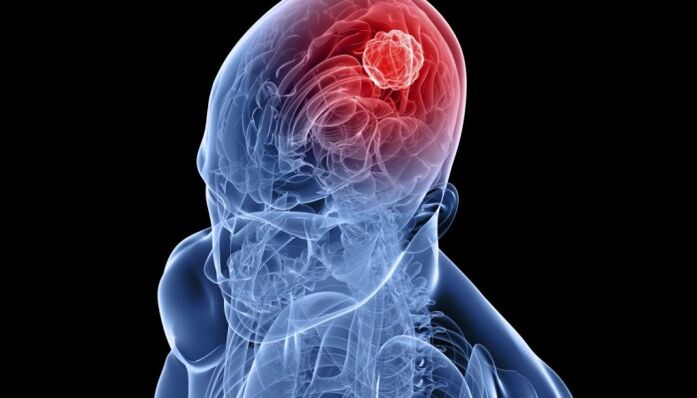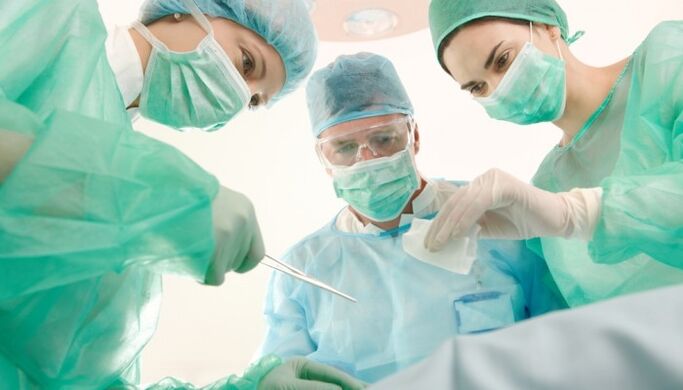When unpleasant sensations arise in a certain area, it is undoubtedly a source of problems for the patient, but pain throughout the body brings much more suffering. In this case, even everyday activities take a back seat as they become difficult to perform.
Many people are familiar with the feeling of weakness, fatigue, and aches that interfere with an active life. Similarly, common muscle, bone, or joint pain cannot be ignored. It must force the patient to make quick decisions to discover the reason and the essence of other measures. But for this, you must first consult a doctor.
Causes
If the muscles and joints of the whole body hurt, then first it is necessary to find out what it is connected with.
A large area of such sensations is bound to push the patient and physician to the idea of a systemic injury. One must look for the reason not in the individual tissues of the musculoskeletal system, but in the functioning of the entire organism and its systems. At the same time, it is quite difficult to understand what really hurts: muscles, bones or joints. Such sensations spread throughout the body and do not have a precise location. But, despite this, there are states in which a similar situation is quite typical. These include the following:
- Physical stress
- Infectious diseases.
- Connective tissue pathology.
- Blood diseases.
- Tumor processes.
- Neurological disorders.
As you can see, the pathology is quite diverse and serious. If you do not take into account the completely physiological reasons for muscle weakness and pain in them, you need to be very careful about the probability of these diseases. Consulting a doctor is never superfluous.
It is possible to make an assumption about the origin of pain in the joints and muscles of the whole body after a clinical examination by a doctor.
Symptoms

Any pathology has characteristic features. All manifestations must be considered, even if they are insignificant. To identify a disease that affects the condition of muscles and joints, it is necessary to analyze the patient's complaints and objective symptoms.
Since pain is the most common symptom, its possible characteristics should be considered:
- Pain, burning, cut, or stabbing.
- It is located in the area of muscles, bones or joints.
- It is felt in the same areas of the body or is volatile.
- Permanent or periodic.
- Moderate, strong or weak.
It can be accompanied by feelings of weakness, fatigue, or pain. If the cause of the pain lies in general diseases of the body, then surely other symptoms will be present, indicating the source of the problem.
Physical stress

To begin with, you need to exclude a situation that almost everyone could face. Excessive physical activity can cause muscle tension, which affects sensations in different parts of the body. Pain and weakness are associated with the accumulation of lactic acid in the tissues and micro-damage to the fibers. Because of this, a sore throat develops, which passes over time. It should be remembered that only the muscles are involved in the process and there should be no other symptoms.
If physical overexertion is excluded, you need to look for more serious causes of pain.
Infectious diseases

Bone and muscle aches are familiar to anyone who has ever had respiratory infections. Even a banal ARF is accompanied by such symptoms. What can we say about a more serious pathology, such as influenza, meningitis, hemorrhagic fevers, leptospirosis, Lyme disease. Flying pains are characteristic of brucellosis and epidemic myalgia. In many cases, these sensations are the result of microbial poisoning. Infectious diseases are accompanied by other symptoms:
- Fever.
- Coughing, sneezing
- Acne.
- Nausea, diarrhea.
- Headache.
- General weakness
Joint pain can even bother patients with liver damage - viral hepatitis. In this case, severity in the right upper quadrant, yellowing of the skin, and decreased appetite are characteristic. We must not forget the possibility of parasitic invasions, for example, trichinosis, in which muscle pain is of great diagnostic value.
The spectrum of infectious pathology is very wide, so it is necessary to timely identify the cause of pain in the body.
Connective tissue pathology

If the muscles and joints hurt, the patient should be examined for systemic diseases: lupus erythematosus, polymyositis, scleroderma, rheumatoid arthritis. They have an autoimmune nature and occur with damage to connective tissue, which is found in all systems of the body. In this case, you should pay attention to the following characteristics:
- Symmetrical damage to the joints of the hands with characteristic deformities in rheumatoid arthritis.
- Redness of the skin in the shape of a butterfly, with lupus erythematosus.
- Weakness of the muscles of the limbs and neck, with polymyositis.
- Thickening of the skin on the fingers, mask-like face, with scleroderma.
One more disease with systemic manifestations should be mentioned: rheumatism. Although a microbial agent (streptococcus) becomes a trigger, in the future an autoimmune process develops. It is because of this disease that flying pains in the joints will be characteristic.
Connective tissue diseases are accompanied by damage to internal organs: heart, lungs, kidneys, as well as blood vessels and the nervous system.
Blood diseases

Diseases of the hematopoietic system are a common cause of bone pain. Unfortunately, most of them are malignant, so it is useful for everyone to know the characteristic signs of such a pathology. In addition to body aches, the following symptoms develop with leukemia:
- Temperature rise
- Swollen lymph nodes.
- Hemorrhages from different locations.
- Pale skin.
- Enlargement of the spleen and liver.
- Tendency to infection.
In addition, they can alter shortness of breath, general weakness, loss of appetite, and nodules on the skin. The acute form of leukemia occurs with pronounced manifestations and is seriously life-threatening in the absence of proper treatment.
Tumor processes

Pain in the area of bones, joints or muscles throughout the body can appear in the structure of paraneoplastic syndrome, which is characteristic of various malignant tumors. It develops due to metabolic, immune and other disorders associated with the primary process. Frequently observed arthro- or osteopathies, similar to various rheumatological diseases. Similar signs appear long before the tumor process is detected.
Additionally, bone pain can result from "cancer poisoning" seen in patients with advanced tumors and metastases. In addition to the indicated symptom, general disorders will prevail in the clinical picture of the disease:
- Great weakness.
- Wasting, until exhaustion (cachexia).
- Lack of appetite, nausea.
- Pale skin with a grayish, jaundiced or bluish tinge.
- Fever.
- Depression, irritability.
Such signs significantly aggravate the patient's condition and adversely affect the prognosis of the disease.
More attention needs to be paid to detecting tumors in the early stages, which is only possible with regular preventive examinations.
Neurological disorders

If the patient feels that his muscles, joints or bones ache, the problem may even be in the nervous system. Very often, similar symptoms are seen with polyneuropathy. The disease may have a different location, but the lower extremities are the most susceptible. In such cases, the following symptoms are noted:
- Numbness, tingling, burning, tingling "goose bumps".
- Decreased sensitivity
- Change in the severity of reflexes.
- Muscle weakness, hypotrophy.
- Thinning of the skin, hair loss, dryness.
Polyneuropathy can cause severe pain that has a significant impact on the quality of life of patients.
Diagnostics

After a clinical examination, it is necessary to use additional methods that will help to establish the correct diagnosis. Given the wide range of possible pathologies, the physician will need a variety of laboratory and instrumental tools. These include the following:
- General analysis of blood and urine.
- Biochemical blood test (infectious antigens, rheumatic tests, tumor markers, acute phase indicators, liver function tests, etc. ).
- Bacteriological analysis of blood and body secretions.
- Bone marrow puncture.
- Magnetic and computerized resonance imaging.
- Neuromyography
Consultation with a rheumatologist, infectious disease specialist, oncologist, hematologist, and neuropathologist is necessary.
A final conclusion about the origin of bone or muscle pain can be made based on the results of a comprehensive exam.
Treatment
Once the diagnosis is established, the doctor determines further measures. Therapeutic tactics will depend on the type of disease, its prevalence and the state of the patient's body. It is difficult to formulate a general therapeutic program for all diseases that may be accompanied by pain or discomfort in the joints, muscles and bones. It all depends on the specific situation, which determines the use of conservative or operational techniques.
Drug therapy

The mainstay of treatment for most diseases is the use of medications. It is difficult to imagine modern medicine without them. A wide variety of drugs allows you to influence almost any mechanism of the development of pathology and its cause. With the advent of certain medications, it has become much easier to treat serious illnesses.
Depending on the established diagnosis and clinical situation, the following pain medications may be used throughout the body:
- Antibiotics and antiparasitics.
- Nonsteroidal anti-inflammatory.
- Hormones (glucocorticoids).
- Cytostatics and immunosuppressants.
- Detoxification
Many of the drugs have serious contraindications for neoplastic diseases. This applies to vitamins and metabolic agents. Its use can improve the progression of the pathological process. Of course, the treatment complex can include additional drugs that will affect the individual symptoms of the disease.
Medications must meet generally accepted standards of therapy and must be prescribed only by a physician.
Operative treatment

Surgery may be indicated for tumors or blood disorders. In the first case, the pathological focus is removed along with the regional lymph nodes. Given the nature of the disease, the subsequent appointment of radiation therapy is possible. With progressive leukemia in the context of conservative treatment, bone marrow transplantation is recommended.
Pain in the musculoskeletal and joint system, which covers most of the body, can be a cause for serious concern. Early diagnosis and proactive treatment will help prevent complications and improve the prognosis of any disease.



































